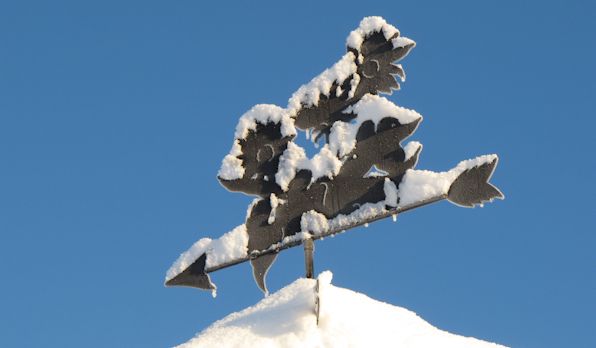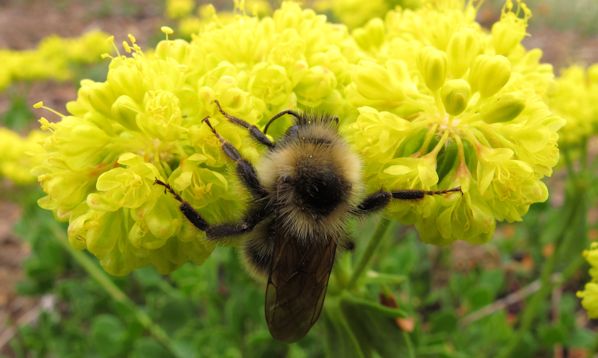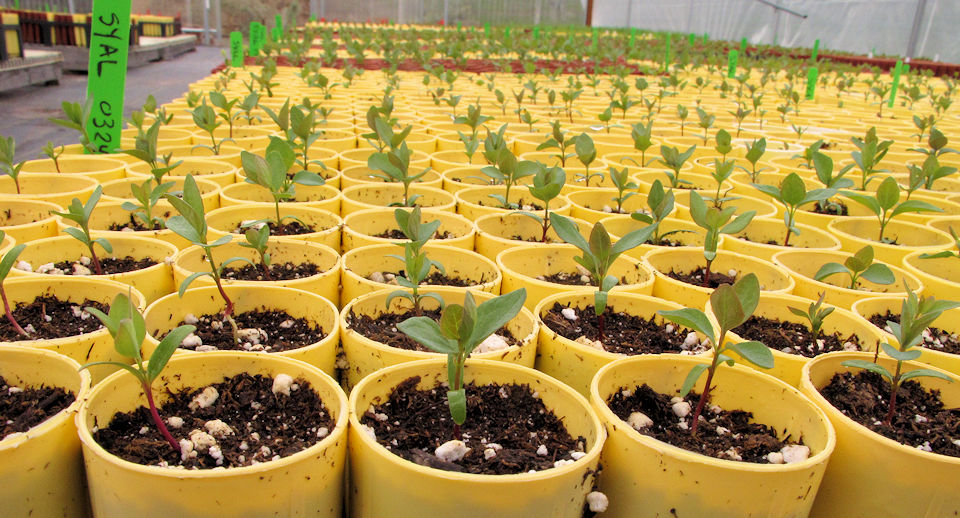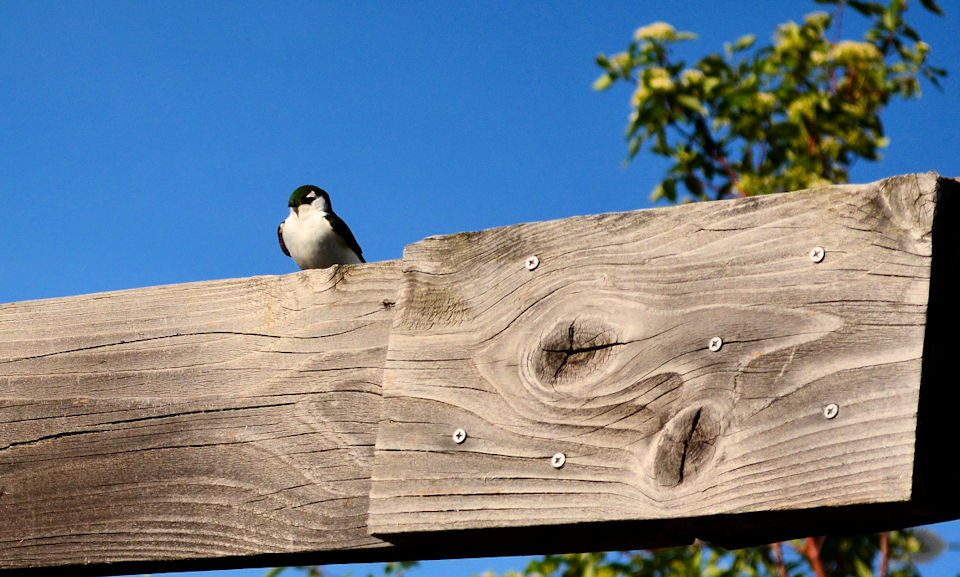Attracting MORE Insects with Native Plants – Part 1: Native Bees
[Winter is hanging around still; after an almost snowless and warm December and January we now have 12” on the ground in Peshastin. Nonetheless, I think of native plants. Here are some articles to get us thinking of the approaching growing season.]
 Signs point to spring
Signs point to spring
One reason for using native plants in the landscape is to attract wildlife which, for many people, begins and ends with birds. Another group of wildlife, often overlooked, that is attracted by natives are arthropods, that is, insects and their relatives (spiders, mites, millipedes and more). In a series of posts I will cover some of the varied and important roles they play in maintaining a healthy ecosystem, and how our use of native plants can sustain them.
Native Bees
Many of us are aware of the decline in honeybee populations, a European species used commercially to pollinate many crops in the US. A number of our native bees, including several bumblebee species, have also declined in recent decades. Native pollinators, including not only bees but also butterflies, moths, flies, wasps and beetles, are needed for the pollination of about 75% of our native flowering plant species and can provide effective pollination of most of the food crops we grow.
 Honeybee on showy milkweed (Asclepias speciosa)
Honeybee on showy milkweed (Asclepias speciosa)
There are many reasons for declining bee populations, including loss of habitat and introduced diseases and parasites, but even a small yard can help sustain these important species. About 4000 species of native bees are found in the US, and close to 800 in Washington state. There are factors, like pesticide use and habitat for nesting and overwintering, which have impacts on native bee populations but that I won’t cover here (see references at the end of this post). Let’s focus on native plants and the role they play.
For bees, native plants are important for the food they provide for bee larvae and adults. Our native flora co-evolved with our native bees to provide pollen and nectar in the right amounts, varieties and timings needed. Our bees are a diverse lot, appearing at different times in the year, active at different times of the day, and having different body sizes, tongue lengths, nutritional needs and more, all of which indicate the need to have a good mix of flowering plants available.
 Bumblebee in cutleaf penstemon (Penstemon richardsonii)
Bumblebee in cutleaf penstemon (Penstemon richardsonii)
Key considerations when planting natives for bees:
- Use native plants from your area; not only will they survive better but they are best suited for your local bees’ needs, i.e. native plants are the bee’s knees!
- Include flowers of several colors; bees are most attracted to blue, purple, violet, white and yellow
- Include one or more plants as clumps of one species, 3-4’ or more across; plants in these groups are more attractive to bees and provide more efficient foraging
- Include different flower shapes as bees have different tongue lengths; contrast a penstemon with aster, for example
- Plant a diversity of species to provide bloom through most of the spring and summer
A list of some choice native bee plants for Central Washington follows. For a more complete list see the references at the end.
Herbaceous plants
- Milkweed (Asclepias) – big nectar producer attracting many bees and other pollinators
- Yarrow (Achillea) – very long bloom period
- Blue flax (Linum) – very long bloom period
- Blanketflower (Gaillardia) – very long bloom period through late summer
- Hyssop (Agastache) – very attractive member of mint family
- Lupine (Lupinus) – several species, adapted to moist to very dry sites
- Penstemon (Penstemon) – many species, cutleaf penstemon (P. richardsonii) blooms long and late
- Fireweed (Chamerion) – long bloom period, extending into late summer
- Wild buckwheat (Eriogonum) – long lasting flowers; range of bloom times, with snow buckwheat (E. niveum) and tall buckwheat (E. elatum) blooming late summer
- Aster (Symphyotrichum) – late season bloomer
- Goldenrod (Solidago) – late season bloomer
 Long-horned bee on aster in September
Long-horned bee on aster in September
Woody plants
- Oregon grape (Berberis) – several species, abundant nectar
- Currant (Ribes) – three or more species to choose from
- Ceanothus (Ceanothus) – snowbrush (C. velutinus) with very attractive, heavy blooms
- Snowberry (Symphoricarpos) – long bloom period, honeysuckle relative
- Purple sage (Salvia dorii) – strong smelling member of mint family, needs very dry site
- Rabbitbrush (Chrysothamnus and Ericameria) – late season bloomers
- Willow (Salix) – mobbed by bees for the abundant pollen
Although native bees will visit garden exotics, studies show that local natives are up to four times as attractive. I have been impressed by the diversity and numbers of native bees that will appear on blooming natives in my nursery demonstration beds, even though the nursery is surrounded by pear orchard. Plant them and they will come!
On line references
The Xerces Society //www.xerces.org/pollinator-conservation/gardens/
Citizen Scientist Pollinator Monitoring Guide //www.xerces.org/wp-content/uploads/2010/06/CA_CSM_guide.pdf help with native bee identification
The Methow Naturalist //www.methownaturalist.com/ handy bumblebee key
WSU Snohomish County Cooperative Extension //snohomish.wsu.edu/garden/nativebees.htm
The Pollinator Partnership //www.pollinator.org/PDFs/Guides/CascadeMixedrx8FINAL.pdf







